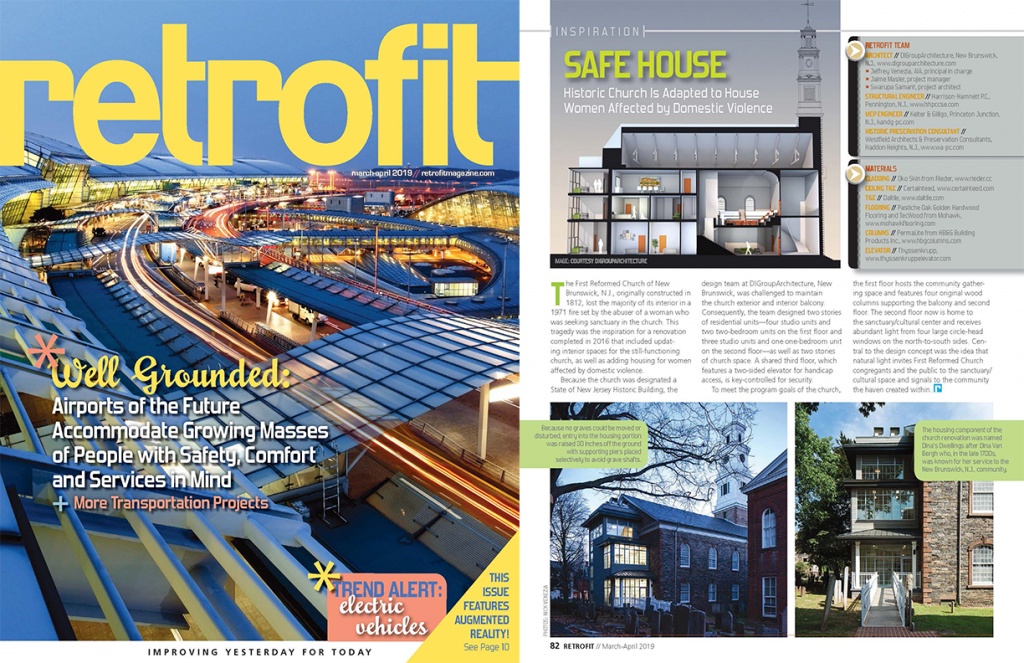
Historic Church Adopted for Survivors of Domestic Violence, Captures the Attention of Retrofit Magazine
The creative re-use of an active historic church to provide affordable, supportive housing for women and children survivors of domestic violence was featured on the “Inspiration” page of RETROFIT magazine’s latest issue.
The First Reformed Church of New Brunswick, originally constructed in 1812, lost much of its interior in a 1971 fire set by the abuser of a woman who was seeking sanctuary in the church. This tragedy inspired the renovations that repurposed part of the church into a haven with affordable housing units, while creating a smaller sanctuary and cultural center for the congregation to gather and worship.
The church had struggled with a declining congregation and an aging facility requiring extensive and expensive maintenance on an annual basis. In lieu of abandoning their roots, the decision was made by the congregation to investigate alternative uses for the church that would be consistent with their mission and desire to be of service to the community. The adaptive re-use of this building allowed the congregation to have a source of income to maintain the historic structure, and not let it fall into disrepair, or worst case, be demolished.
The main part of the sanctuary was deep enough to divide into three floors of housing — two two-bedroom units, one one-bedroom unit and seven efficiency apartments — plus shared program space. A community gathering space on the first-floor features four original wood columns supporting the balcony and second floor, and a smaller sanctuary/cultural center built from the original balcony is located on the second floor with ample natural light emanating from four large circle-head windows on the north-to-south sides.
A common unifying design element in the project is light. The natural light occurring from both the original preserved windows and the window-filled entryway addition serves as a beacon to the community as a safe and secure place to start anew.
With a historic designation, the design team was challenged to not only maintain the church exterior and interior balcony, but not to disrupt the graveyard during construction, which involved review and approval from the National Register of Historic Places, New Jersey Historic Trust and the New Jersey State Historic Preservation Office. During archaeological investigations, the exact location of graves in the churchyard (some dating back to the 1700s) could not be determined definitively. Therefore, the team creatively designed the entryway addition to the housing units, to be elevated and cantilevered over the sacred ground below with supporting piers placed selectively to avoid grave shafts.
The housing component of the church renovation was named Dina’s Dwellings after Dina Van Bergh who, in the late 1700s, was known for her service to the New Brunswick community.
Most notably, the project received the New Jersey Future Smart Growth Award in 2017.
Dina’s Dwellings is a fine example of “Architecture for Change” — DIGroupArchitecture’s fundamental belief that, through design, we can impact people’s basic needs for a better life. It’s one of those special design projects that reminds us of the impact of our work on the communities we are privileged to serve.
View Dina’s Dwellings Project Page for more information.

